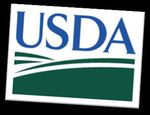Today CACFP - Wisconsin Department of Public Instruction
←
→
Page content transcription
If your browser does not render page correctly, please read the page content below
DPI COMMUNITY
NUTRITION TEAM
CACFP
Today
VOLUME 13/ NO. 3 / December 2021 FEATURED STORIES
Happy Holidays!
CACFP Week
GM Webpage Changes
CACFP in Public Schools
The Community Nutrition Team (CNT) wishes all of you peace and joy Heard it Through the
throughout the coming year. DPI recognizes there have been many Grapevine
challenges this past year. Thank you for your continued partnership with
the CNT to ensure the children of Wisconsin have access to healthy
Farm To ECE
meals and snacks. Happy Holidays!
Crediting Combination Items
CACFP Week March 2022
It’s never too early to start planning for CACFP Week! CACFP Week is a Wisconsin Chili Lunch
national educational and information campaign sponsored annually by the
National CACFP Sponsors Association designed to raise awareness of how USDA New Guidance
the USDA's Child and Adult Care Food Program works to combat hunger.
The CACFP brings healthy foods to tables across the country for children in CNT Staff Updates
child care centers, homes and afterschool, as well as for adults in day care.
About CACFP
For more information and resources for CACFP Week 2022, please visit
the National CACFP Sponsors Association website.
SAVE THE DATES
Guidance Memorandum (GM)
Webpage Changes February 4, 2022:
Wisconsin Chili Lunch
The Guidance Memorandum webpages have been updated with a new
layout which we hope allows users better access to the information March 14-18, 2022:
needed to successfully operate the CACFP. Many of the GMs, forms and CACFP Week
resources have been revised so be sure to go to the GM webpage to
check out the updates and to use the most current version of the forms.Attention all Public Schools participating
in the At-Risk After School Child and
Adult Care Food Program
If you are a public school that administers an At-Risk After School site(s) in
the Child and Adult Care Food Program (CACFP) please ensure that you are
accounting for your CACFP funds correctly. All CACFP revenues and
expenditures must be recorded in your Fund 50 account under Project Code Questions?
551. This revenue and expenditure report will be used to support the
quarterly or annual CACFP Financial Reports that you send to DPI. Contact Cari Ann
Since the CACFP is a separate federal program from the National School Muggenburg by e-
Lunch (NSLP), School Breakfast Programs (SBP), and Summer Food Service
Program (SFSP) it is essential that the accounting for the revenue and mail:
expenditures in these programs are easily identifiable and support the cari.muggenburg@
CACFP expenditures.
dpi.wi.gov or
For example, if you are a public school district that claims supper meal
service through the Child and Adult Care Food Program the costs that your phone: (608) 264-
district incurs and the reimbursement you receive as a result of these meals
should be coded as follows: 9551.
Revenue
CACFP Meal Service Reimbursement – Fund 50, Source 717, Project 551
CACFP Cash in Lieu of Commodities – Fund 50, Source 715, Project 551
Expenditures
Salaries – Use Object Code 100 under Project 551
Benefits – Use respective Object Code 200 under Project 551
Purchased Food Supplies – Use Object Code 410 under Project 551
Purchased Kitchen Supplies – Use respective Object Codes 400 under Project 551
Purchased Services (included Vendor Services) – Use respective Object Code 300
under Project 551
If your school district is finding that it has incurred a surplus balance in any
of the federal food service programs (CACFP, SFSP, NSLP, etc.) this balance
must be retained in the Fund 50 account and be used to off-set the
expenditures incurred in the other federal food service programs. Under
no circumstances can this balance be transferred out of the Fund 50
account. Remember that program requirements only allow a three-month
operating balance to be carried over into the next fiscal year. If your agency
is having difficulty spending down your Fund 50 balance that has incurred,
please contact your respective SNT or CNT program consultant.
CACFP TODAY/ VOLUME 13 / NO. 3 2I Heard It Through the Grapevine
I Heard it through the Grapevine: “I was told that a grain item is
considered whole grain rich when the first ingredient is a whole grain or
whole wheat.”
CACFP Requirement: When the CACFP meal pattern requirements were
updated in October 2017, the requirements for determining a grain to be
whole grain rich (WGR) were also changed. Programs can no longer
determine a grain to be whole grain just by looking at the first ingredient.
A grain item is WGR when:
• The product package for bread, buns or rolls is labeled “Whole
Wheat,” “Entire Wheat,” or “Graham” or pasta is labeled “Whole
Wheat;”
• The product is found on the Wisconsin WIC list;
• A specific FDA health claim is included on the product package
Are you completing
(health claims are listed in the CACFP Reference Guide. See link
below for more information);
CACFP requirements
• A Child Nutrition (CN) label or Product Formulation Statement because:
credits the item as WGR; or • “I heard from
• Using the Rule of Three, which requires that the first ingredient (or someone else this is
second after water) is a whole grain or flour, and the second and the way to do it,”
third grain ingredients (if there are any) are whole grain, enriched • “That is the way I was
grain, bran or germ. trained,” or
• “We have always
For more information on the ways to determine a grain to be WGR,
including the Rule of Three, see the CACFP Reference Guide.
done it this way!”
If you have any questions about how you are completing a CACFP
requirement, contact your Assigned Consultant.
Farm to ECE
This year marks the 10th anniversary of the National Farm to School
Network’s launch into Farm to Early Care and Education (ECE)! Farm to
ECE programming offers increased access to healthy, local foods,
gardening opportunities and food-based activities to enhance the quality
of the educational experience in all ECE settings.
Here are some resources to help you get started!
• What is Farm to Early Care and Education? More information
• USDA Fact Sheet: Local Food and Learning in Early Child Care and can be found on
Education Settings DPI’s Farm to ECE
• Getting Started with Farm to Early Care and Education webpage.
CACFP TODAY/ VOLUME 13 / NO. 3 3Crediting Combination Food
Items in the CACFP
When crediting combination food products (food items that contribute
to more than one meal component), only the amount of the food that
contributes to each component is counted. For example, pizzas, chicken
nuggets, and ravioli count toward the meats/meat alternates (M/MA)
component. The amount of M/MA per serving is used for crediting
purposes, not the total portion size which includes other ingredients.
Combination foods may contain varied amounts from a meal component.
Due to the uncertainty of the actual amount of the meal components
contained in the commercial combination food product, for example
M/MA, they cannot be served as part of a reimbursable meal if they are
For more
not in the Food Buying Guide (FBG) unless they are CN Labeled, or you information,
obtain a Product Formulation Statement (PFS) from the manufacturer please visit
that shows how the creditable amount was determined. This Guidance
documentation must be obtained prior to the combination food product Memorandum 12
being served.
on our webpage!
During a program review, we are responsible for checking your
documentation to ensure meal pattern requirements are met. Check
with your Nutrition Program Consultant if you are unsure if a food is
creditable or if you have questions on what type of documentation is
needed.
Wisconsin Chili Lunch
Celebrate Wisconsin-grown foods and farm to institution efforts by
joining the 2022 Wisconsin Chili Lunch. Join K-12 schools, early care
and education programs, hospitals, colleges, and more by cooking and
serving a chili recipe made with local ingredients on National Chili
Day—Thursday, February 24, 2022!
The goal of the Wisconsin Chili Lunch is to create strong connections
between Wisconsin farmers and eaters and demonstrate how
organizations can serve Wisconsin-grown foods - even in winter. This
statewide chili lunch event inspires nutritious school and early care
meals and supports farm to institution initiatives throughout the state
while encouraging year-round purchases of local foods.
Participation is simple: Prepare and serve your Wisconsin Chili Lunch
using as many locally grown ingredients as possible! Add local meats, Visit the Wisconsin Chili
cheese, or yogurt! Serve it in a bowl, on a baked potato, or with a Lunch website to register,
cinnamon roll! Use a recipe listed on the Wisconsin Chili Lunch find resources, and more!
website or cook up your own favorite recipe. Register today to get the
Chili Lunch Guide, supply chain help, more recipes and get connected
to other farm to institution efforts in the state.
CACFP TODAY/ VOLUME 13 / NO. 2 4USDA: New Guidance
CACFP 14-2021: Previously Issued Questions and Answers Relating
to Operation of the Child Nutrition Programs: Updated for School
Year 2021-2022
This memorandum includes questions and answers intended to
provide clarification to state agencies and program operators as they
operate the child nutrition programs, including the National School
Lunch Program (NSLP), School Breakfast Program (SBP), NSLP
Seamless Summer Option (SSO), and Child and Adult Care Food
Program (CACFP).
CACFP 15-2021: COVID-19 Waiver Requests Submitted Prior to
December 31, 2020
This memorandum clarifies that individual state agency waiver
requests submitted to the Food and Nutrition Service (FNS) in
calendar year 2020 requesting flexibilities in the NSLP, SBP, CACFP, Listed to the left are recent
SFSP, SMP, and FFVP during the COVID-19 public health emergency policy memos issued by
that have not been approved or denied prior to Dec. 31, 2020, will no
longer be considered active requests. the United States
CACFP 16-2021: Child Nutrition Emergency Operational Costs
Department of Agriculture
Reimbursement Programs: Q&As #3 (USDA) and a brief
This memorandum includes questions and answers intended to
provide clarification to state agencies as they implement the Child summary of each one.
Nutrition Emergency Operational Costs Reimbursement Programs. Click on FNS Documents &
This set of Q&As addresses questions regarding assurance
statements, program operator eligibility, financial management, Resources to access the
reporting, and monitoring and operations.
complete list of USDA
CACFP 17-2021: Questions and Answers for Child Nutrition policy memos and to
Program Operations in School Year 2021-2022, Q&A #2
This memorandum includes questions and answers intended to download copies.
provide clarification to state agencies and program operators as they
operate the child nutrition programs, including NSLP, SBP, SSO, and
CACFP during school year (SY) 2021-2022. COVID-19: Child
Nutrition Responses -
CACFP 18-2021: Questions and Answers for Child Nutrition
Programs Emergency Procurement Due to Supply Chain Disruptions For the list of USDA issued
This memorandum includes questions and answers intended to
provide clarification to state agencies and program operators as they
responses check out our
utilize the noncompetitive procurement method found at 2 CFR Child and Adult Care Food
200.320(c).
Program COVID-19
CACFP 02-2022: Child and Adult Care Food Program (CACFP) Information webpage.
Flexibilities During COVID-19 Supply Chain Disruptions
This memorandum outlines the existing flexibilities available to all
Child and Adult Care Food Program (CACFP) operators experiencing
supply chain disruptions related to the COVID-19 pandemic and
encourages state agency and sponsoring organization discretion
when monitoring for compliance with meal pattern requirements.
CACFP TODAY/ VOLUME 13 / NO. 3 5USDA: New Guidance (Cont.)
CACFP 02-2022: CACFP Flexibilities During COVID-19 Supply Chain Disruptions
This memorandum outlines the existing flexibilities available to all Child and Adult
Care Food Program (CACFP) operators experiencing supply chain disruptions
related to the COVID-19 pandemic and encourages state agency and sponsoring
organization discretion when monitoring for compliance with meal pattern
requirements.
CACFP 03-2022: Updates to the Federal Micro-Purchase Threshold in 2 CFR
200.320(a)(1)
The purpose of this guidance is to make state agencies and program operators
aware of regulatory changes made by the Office of Management and Budget which
they may utilize at their discretion. These changes may be helpful to program
operators experiencing challenges related to supply chain disruptions.
CNT Staff Updates
We are pleased to announce that we have two new Nutrition Program
Consultants joining our team!
Mika Vuckovich: “My name is Mika, and I am 100% Serbian. I love to learn and
have an unhealthy collection of books. My work experience has included school
nutrition, eating disorders, and retail. I am currently working on my master's
degree in Nutritional Sciences, and in my spare time love to sing with the local
choir and play volleyball.”
Emily Rox: “My hobbies and interests include cooking, baking, and spending time
Mika Vuckovich
with my family and our two English bulldogs, Ruby and Poppy. I am from La Crosse,
WI and recently graduated from Viterbo University with a bachelor's degree in
dietetics. I spend most of my time in the historic downtown La Crosse area where I
have worked the past few years at the Pearl Ice Cream Parlor and Confectionary
as well as the adjoining retail shops. I am a member of the production staff at the
Pearl, so I spend my days hand making the fudge and specialty chocolates they
sell.”
Sadly, we have also said goodbye to Molle Polzin, who is moving into a role with
the Institute of Child Nutrition (ICN). We wish you all the best, Molle!
Molle Polzin: “It is with mixed emotions that I leave this position as a Nutrition
Program Consultant with DPI. I’m sad to leave this job I’ve had for over 20 years
but am excited to start a new chapter as an Education Training Specialist for the
Institute of Child Nutrition (ICN) in which I will be developing CACFP training and
Emily Rox
resources. It has been a pleasure working with so many wonderful individuals over
the years, including everyone at DPI, and all of you in the centers, schools and
home sponsors. I would like to express my sincere gratitude for all the hard work
you do for the children in Wisconsin. Your dedication makes an enormous impact
on the children you care for and I am truly grateful to have worked with each and
every one of you.”
CACFP TODAY/ VOLUME 13 / NO. 3 6About Us
CACFP Today is published three times per year by the
Department of Public Instruction.
Questions or comments should be directed to:
Community Nutrition Team
Wisconsin Department of Public Instruction
PO Box 7841
Madison, WI 53707-7841
(608) 266-3874 or (800) 441-4563
dana.reedy@dpi.wi.gov
This publication is available from:
Division for Finance and Management
Community Nutrition Program
(608) 267-0363
dpi.wi.gov/nutrition
December 2021 Wisconsin Department of Public Instruction
The Wisconsin Department of Public Instruction does not discriminate on the basis of sex, race,
color, religion, creed, age, national origin, ancestry, pregnancy, marital status or parental status,
sexual orientation, or ability and provides equal access to the Boy Scouts of America and other
designated youth groups.
In accordance with Federal civil rights law and U.S. Department of Agriculture (USDA) civil rights
regulations and policies, the USDA, its Agencies, offices, and employees, and institutions
participating in or administering USDA programs are prohibited from discriminating based on race,
color, national origin, sex, disability, age, or reprisal or retaliation for prior civil rights activity in any
program or activity conducted or funded by USDA.
Persons with disabilities who require alternative means of communication for program information
(e.g. Braille, large print, audiotape, American Sign Language, etc.), should contact the Agency (State
or local) where they applied for benefits. Individuals who are deaf, hard of hearing or have speech
disabilities may contact USDA through the Federal Relay Service at (800) 877- 8339. Additionally,
program information may be made available in languages other than English.
To file a program complaint of discrimination, complete the USDA Program Discrimination
Complaint Form, (AD-3027) found online
at http://www.ascr.usda.gov/complaint_filing_cust.html, and at any USDA office, or write a letter
addressed to USDA and provide in the letter all of the information requested in the form. To
request a copy of the complaint form, call (866) 632-9992. Submit your completed form or letter to
USDA by:
(1) mail: U.S. Department of Agriculture
Office of the Assistant Secretary for Civil Rights
1400 Independence Avenue, SW
Washington, D.C. 20250-9410;
(2) fax: (202) 690-7442; or
(3) email: program.intake@usda.gov.
CACFP TODAY/ VOLUME 13 / NO. 3 7You can also read



























































